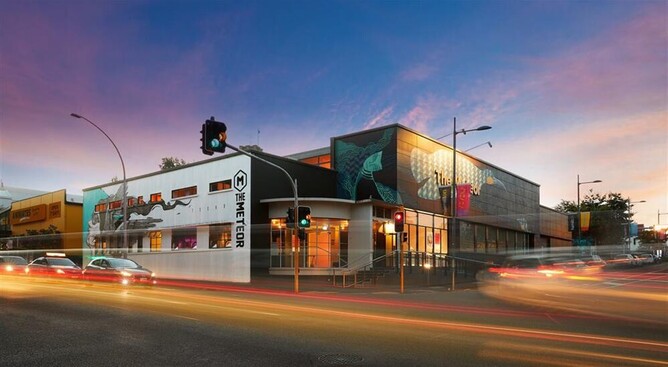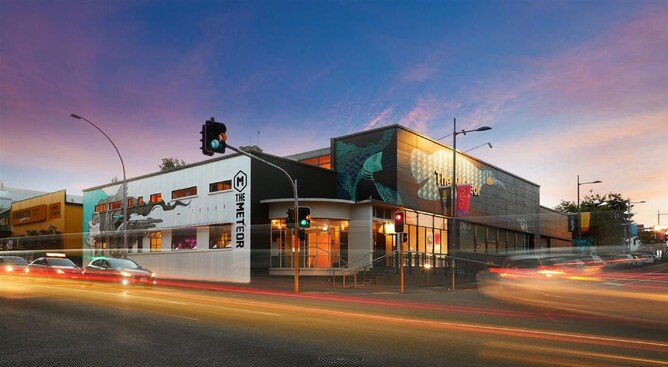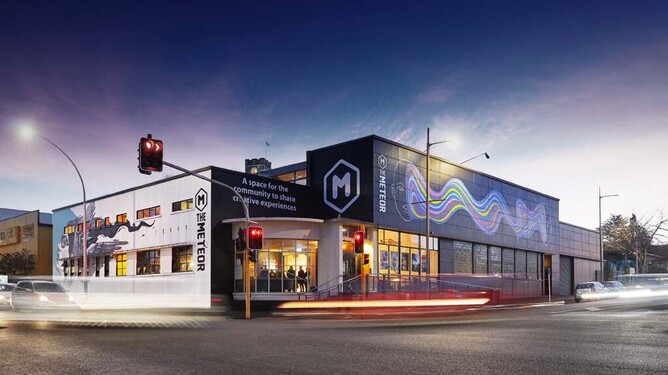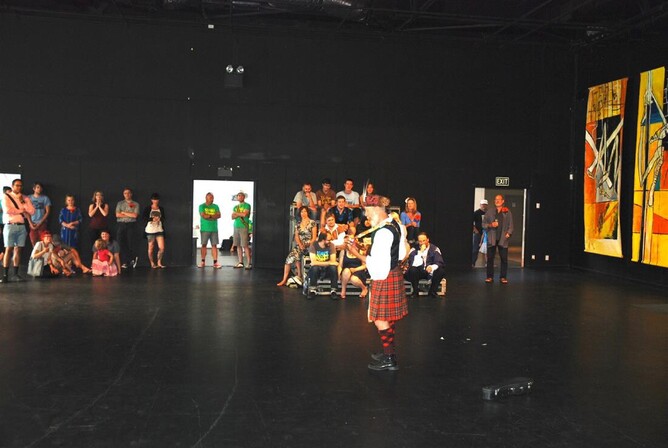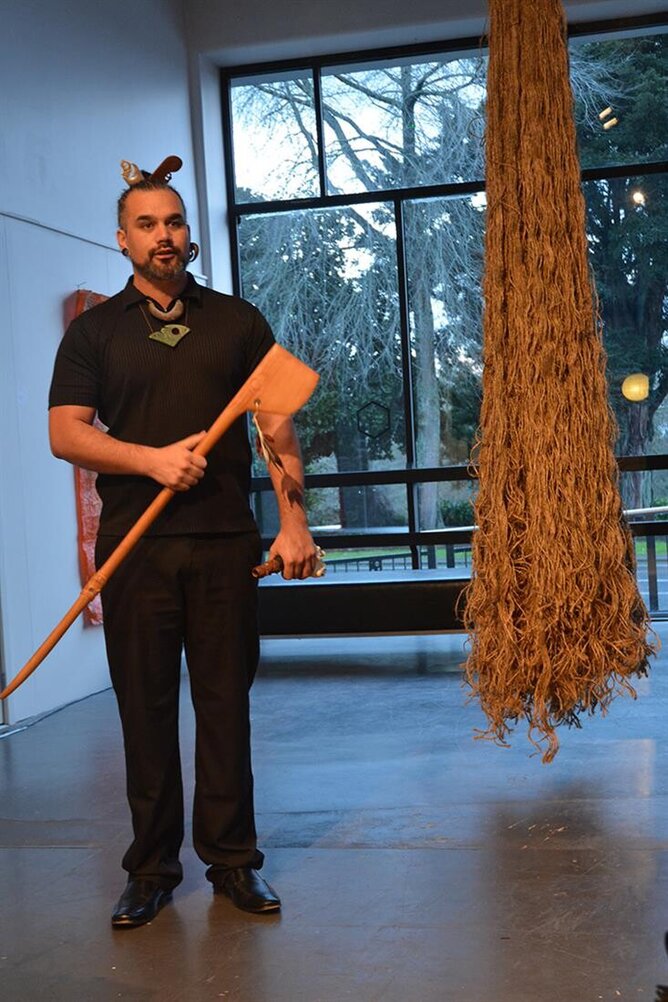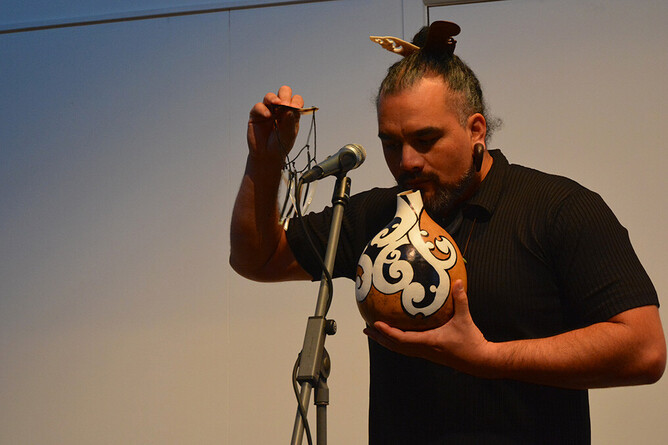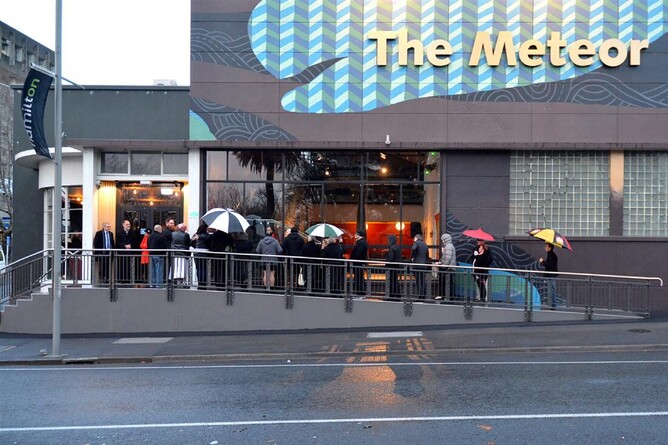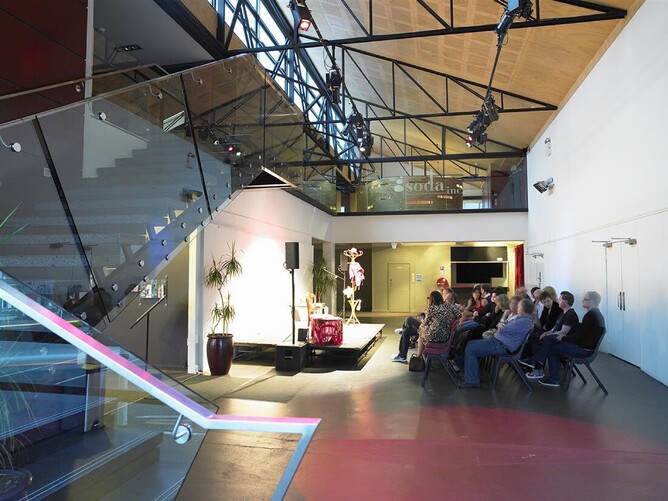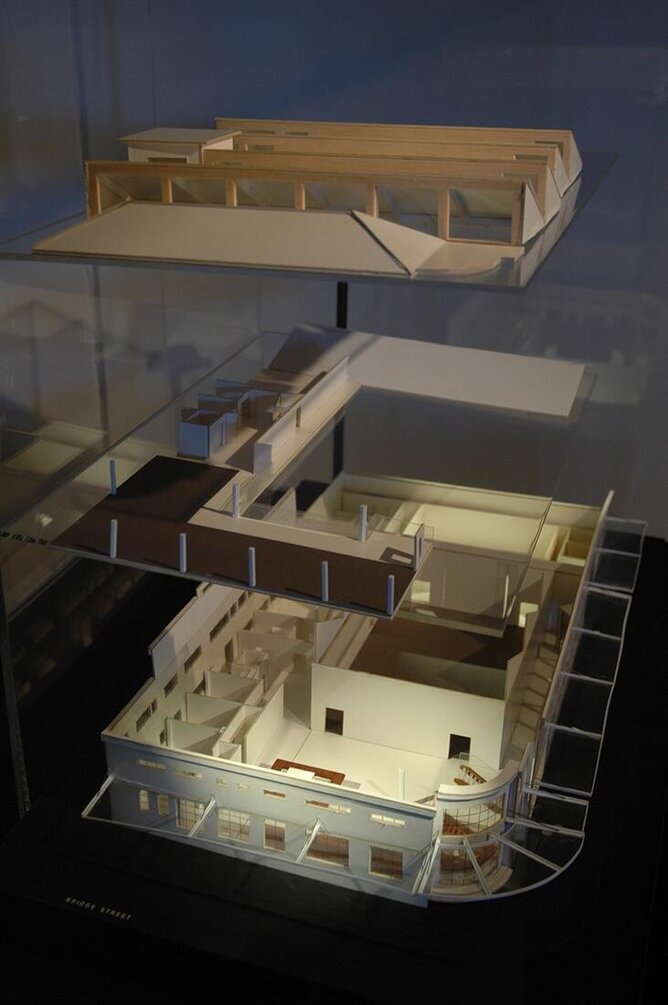The Scene:
It is the early 2000s, Hamilton, New Zealand.
There is a talent exodus from the city due to a lack of jobs.
There is scant interest in the main remaining building of the former Innes Bottling factory still standing on the north-western corner of Victoria and Bridge Streets, an entrance to Hamilton’s CBD.
Architecturally, the moderne era visage of the five decade old building by Hamilton architect, Aubrey de Lisle, deserves to be celebrated, much more than the dilapidated and faded pink appearance it sports from previous incarnations as a skating rink and, briefly, a car yard.
Disquiet is brewing within the Hamilton City Council about its theatre assets. One department is busy attempting to revitalise the city’s theatres through a deliberate process of individual rebranding, including the black box theatre at 1 Victoria Street is known as The Meteor. Other voices within city hall are contending that “Council is responsible for too many theatres”, and the seed is planted to divest Council of these loss-incurring holdings, starting with The Meteor.
Alarmed at the prospect of losing this culturally valuable, if not financially prosperous asset, concerned members of the public propose an alternative to closure of the theatre, and machinations begin for the transformation of the Meteor, building and all, into a creative industries hub.
A memorandum of understanding is established between Hamilton City Council, Wintec, University of Waikato, Antanas Procuta Architects (as PAUA was then known), and others to investigate developing a creative industry innovation centre, alongside a theatre space in the historic building at 1 Victoria Street.
“Our role as architect at this stage was to visualise and prepare concept designs and a model based on how the building could be enhanced to become a landmark gateway to the CBD, and to accommodate a theatre space along with a hub for creative industries.”
- Antanas Procuta, Architect
Hamilton City Council’s (HCC) first role in the building’s upgrade is as owner of the building - undertaking the critical upgrade of the power supply, removal of asbestos roofing, and creating an insulated soundproof roof/ceiling, and providing a stair and lift to the mezzanine floor.
Skip to the next year, and construction begins on the architects’ design turning the previously derelict industrial mezzanine into an open plan creative industries incubator.
In this phase the architect-designed statement staircase of dark polished aggregate embedded with coloured glass fragments celebrating the building’s history as a bottling factory is installed, leading up from the multi-use lobby / gallery space and 2000m² black box theatre below. An elevator is also installed, and in 2009 this hub on the upper floor is launched as SODA Inc.
Possibly representing Hamilton’s first co-working facility, the opening of this space brings phase one of the building metamorphosis to a close.
Nearly 10 years have passed since the events of Act One, and under a new council the building at 1 Victoria Street is finally sold, for the princely sum of $1, to the community-run One Victoria Trust under the leadership of Charlotte Isaac, William Farrimond, and others. Ownership will pass to the Trust on the proviso that they complete siesmic upgrade works now required under ‘earthquake strengthening’ legislation.
In the meantime the SODA Inc hub has undergone minor upgrades, under the design and project management of PAUA Architects, to create additional workspaces. But the success of the incubator see it finally outgrow it’s vibrant location above the Meteor theatre, and they relocate to elsewhere in the CBD in 2015.
Seismic upgrading does not come cheap - but with grants and donations from charitable organisations and corporate supporters, contributions in kind from trades and professional services, and a public fundraising campaign - phase two of the building upgrade gets underway.
Engineers BCD Group devise a plan for strengthening the theatre by rebuilding the adjoining workshop space as a reinforced concrete structure, and then tying the main theatre building to it. Completed in May 2017, phase two works also create a ‘green room’ and changing facilities for the theatre, soundproofed the black box performance space, and add a street front ramp at the main public entrance to improve accessibility for all.
Now under the Trust’s ownership, the mezzanine space is converted into a creative cluster of rehearsal and workshop space for hire, alongside a number of short- and long-term hire work pods and hot-desking spots.
Remembering the early goal of creating a remarkable gateway to the CBD, the exterior of 1 Victoria Street has morphed over the first two Acts too. From the architect’s early vision of timeless public building in industrial green and deep cinnamon with cream and gold accents creating the visual effect of greek doric columns, to becoming one of the city’s most prominent street art mural canvas’.
The original concept design prepared by the architectural team has stood the test of time, and the Trust intends to proceed with the final phase of the design as funding allows.
These will include the very welcome upgrading of the visitor toilets, further practical and aesthetic enhancements to the exterior at the main entrance, and perhaps what lead architect Antanas Procuta has most looked forward to since the first sketch of the concept design: opening up the lobby area to the streetscape (including lowering of the Anzac Parade windows) and developing a ticketing and restaurant Hub. The intent is that this creates a presence and a sustainable revenue stream for the Trust and an appreciation of this historically and culturally significant building by the community.
